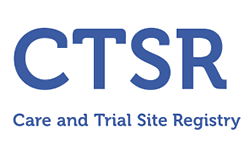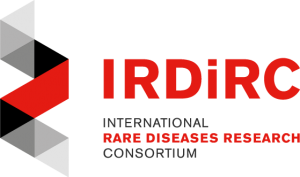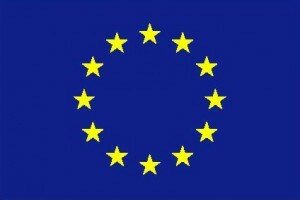Disturbed proprioception by PIEZO2 causes a new form of muscular atrophy
Muscular atrophy is the wasting of muscle mass leading to muscle weakness. It occurs during immobilization, for example after a bone fracture, but may also have a genetic origin. Then there is mostly a mutation responsible for the disease. There is a great number of patients with inherited muscular atrophy, in which the disease-causing gene is unknown. The research group of Prof. Dr. Brunhilde Wirth at the Institute of Human Genetics at the University Hospital of Cologne and the Center for Molecular Medicine Cologne (CMMC) has succeeded to identify mutations in a gene called PIEZO2 that cause a new type of muscular atrophy. The scientists now published their results in the renowned magazine The American Journal of Human Genetics.
Close your eyes, lift and extend your arms, and blindly bring your index fingers to match in front of you. To end up with the fingers close to each other is easy, but complex processes happen unconsciously in the background to make things working. Even though there is no visual information about the exact position of arms and fingers, we still have a good clue where the arms actually are – a sense called proprioception.
It is the feeling of body part positioning in space. The sensing of whether a muscle is contracted or not, even though we cannot see, teaches us where our body parts are. A properly working PIEZO2 is needed for exactly this. The PIEZO2 gene is a blueprint for a protein that senses stretch in muscles and in the skin – a so-called mechanoreceptor, because it senses mechanical force.
Markus Storbeck, postdoctor in Wirth’s lab, has analyzed sequence data of more than 20,000 genes of muscular atrophy patients and has identified so-called homozygous frameshift mutations in the PIEZO2 gene. This means that a short piece of sequence is either missing or inserted so that the language of the PIEZO2 construction plan is distorted and cannot be read anymore. Accordingly, cells cannot produce PIEZO2 proteins and lack this important mechanoreceptor leading to disease.
Even though this is an inherited disease, parents of patients are not affected by it, but both carry a single mutated gene copy (heterozygous). Patients have two affected gene copies (homozygous), one is passed on from the mother, and the other is passed on from the father. Geneticists call this an autosomal recessive mode of inheritance.
The medical doctor and PhD student Andrea Delle Vedove working in Wirth’s group has conducted experiments on cultivated cells taken from the patients’ skin. By his work he demonstrated that the identified mutations in PIEZO2 make it impossible for the cell to read the sequence. Cells consider the blueprints to be waste and thus, construction plans are destroyed by the cell. Consequently, there is no PIEZO2 protein in patients’ cells and cells lack the ability to sense mechanical forces like stretch or pressure.
The disease caused by PIEZO2 mutations is congenital, which means it is present at birth and muscular defects already arise during embryonic development. Healthy unborn babies move in the uterus – a prerequisite for muscle development and growth by “workout”. The scientists around Professor Wirth believe that proprioception, as it is mediated by PIEZO2, is needed to govern this early muscle development.
Muscles that fail to sense stretch are too short at birth leading to deformities, like scoliosis and joint rigidity. Some of them may be surgically corrected, but there is no treatment available for the motoric deficits in these patients. As for all genetic diseases, the identification of the disease-causing gene and a deeper understanding of the mechanism that leads to disease is necessary to develop strategies for treatment. The first steps on this way have just been made.
Original publication:
Delle Vedove A.*, Storbeck M.*, Heller R., Hölker I., Hebbar M., Shukla A., Magnusson O., Cirak S., Girisha K.M., O’Driscoll M., Loeys B. and Wirth B. Biallelic Loss of Proprioception-Related PIEZO2 Causes Muscular Atrophy with Perinatal Respiratory Distress, Arthrogryposis, and Scoliosis.
Please note: This paper is free to download before 23rd December 2016.
Am J Hum Genet. 2016 DOI: http://dx.doi.org/10.1016/j.ajhg.2016.09.019
*First authors with equal contribution
—————————————————————
PhenomeCentral “matchmaking” portal launches on Rare Disease Day 2014
A new online system to match up patients with similar genotypes and phenotypes is being launched today. PhenomeCentral aims to connect clinicians and scientists worldwide with others working on similar cases and thereby speed up the discovery of genes responsible for rare disorders.
In a press release, co-lead Michael Brudno, an associate professor with the University of Toronto’s Department of Computer Science who also holds an appointment in the Centre for Computational Medicine at the Hospital for Sick Children explains how the new portal will work. “PhenomeCentral securely stores clinical and genetic information on patients with undiagnosed rare diseases. Clinicians will upload information and the database will automatically and anonymously match patients with similar genome and phenotypes.”
Rare disease research is conducted in disparate centres all over the world, but the rarity of the conditions makes it imperative for researchers to collaborate across national boundaries to solve their undiagnosed cases. “Being able to ‘plug in’ a tool like PhenomeCentral to our data-sharing platform means that we can make use of the power of its match-making abilities to find similar patients and advance research,” said Past TREAT-NMD Chair and RD-Connect coordinator Hanns Lochmüller.
PhenomeCentral is funded by the Canadian Institutes of Health Research (CIHR), Genome Canada, the Ontario Genomics Institute, as well as the National Sciences and Engineering Research Council (NSERC) through the Collaborative Health Research Program. For further information and to read the full press release click here to visit the RD-Connect website.
—————————————————————
38 million EUR for rare disease research
On 24 January 2013, international experts explained the latest cutting-edge approaches to medical research in the rare disease field at a press conference to celebrate the launch of 38 million EUR of funding for rare disease research and therapy development.
Click here to download the invitation to the special press event at Camp Nou.
—————————————————————
Joint launch Barcelona, 25-27th January 2013
Four IRDiRC projects launched in Barcelona have received nearly 40 million EUR of FP7 funding for cutting-edge research and collaboration over the next six years. Funding focuses on international collaborations:
- Identifying the genetic and epigenetic causes of rare kidney disorders – EURenOmics led by Heidelberg University Medical Centre, Germany
- Addressing rare neurodegenerative and neuromuscular disorders using next generation whole-exome sequencing – Neuromics led by the University of Tübingen, Germany
- Developing a global infrastructure to share the research of rare disease projects – RD-Connect led by Newcastle University, UK
- Supporting international rare disease collaboration through IRDiRC – SUPPORT-IRDiRC led by INSERM, France



